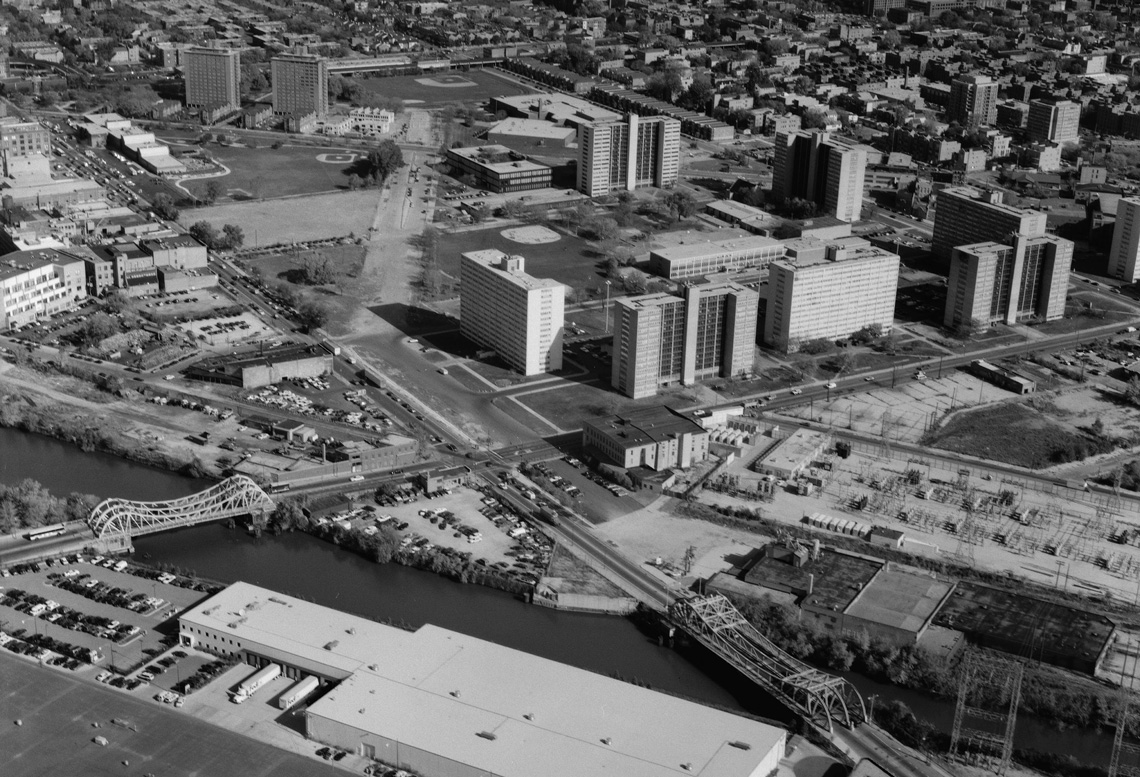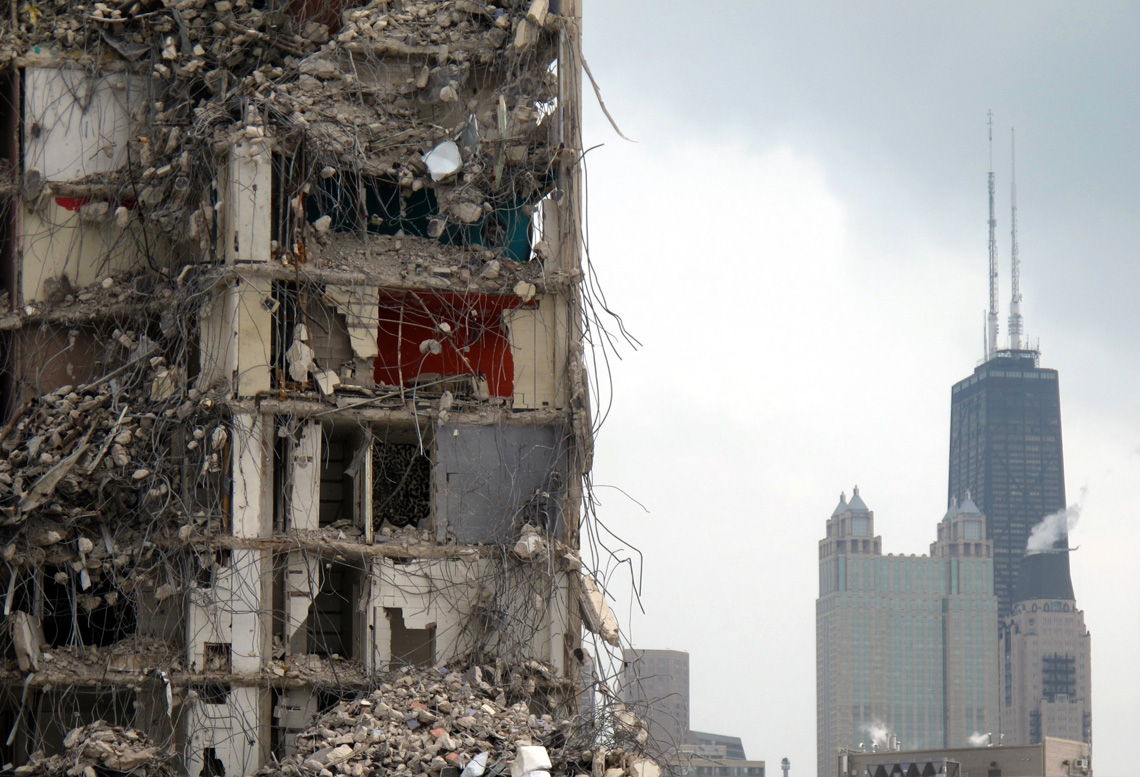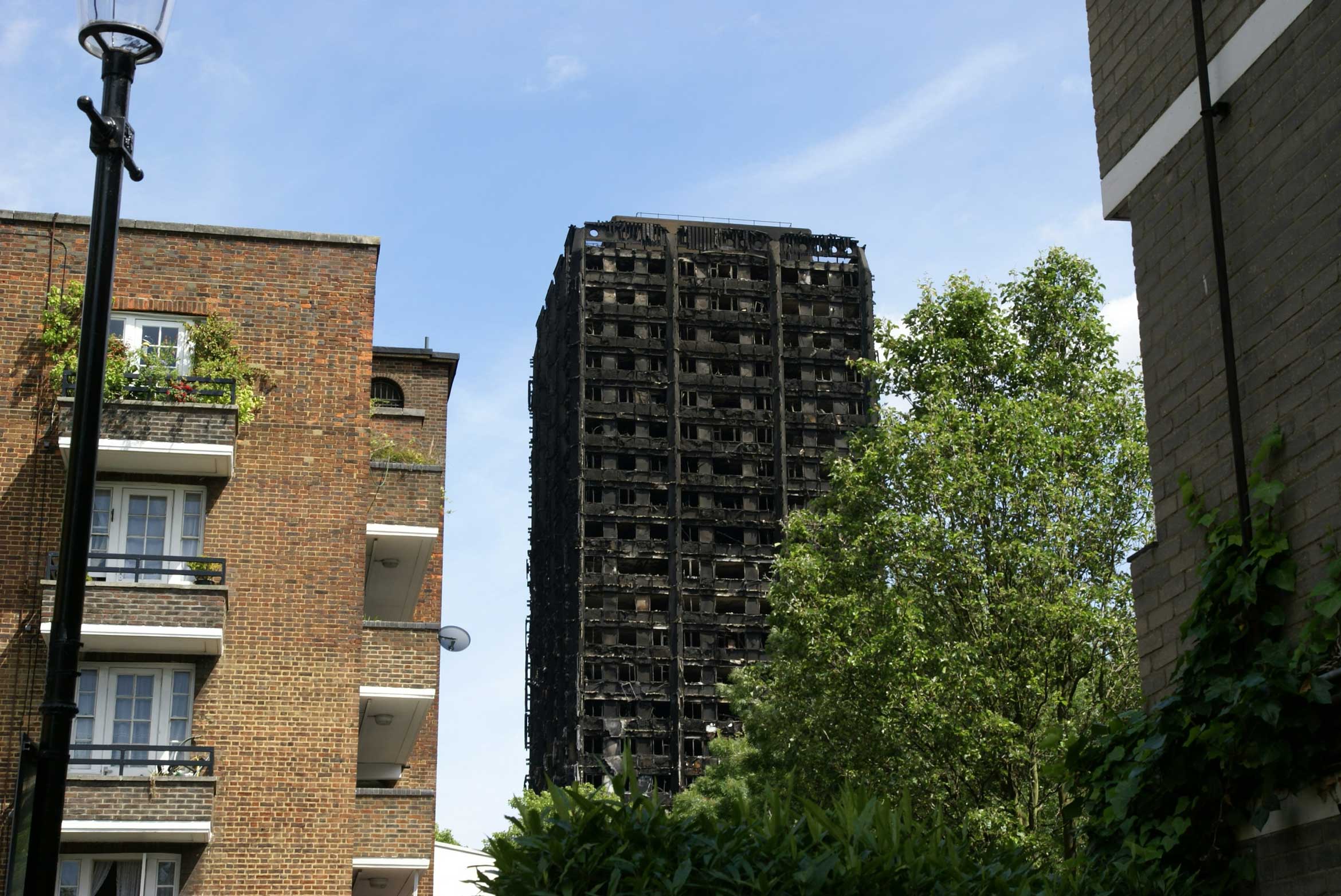
We are celebrating 15 years — and counting — of stories that are deeply researched and deeply felt, that build a historical record of what the city has been.
We are celebrating 15 years — and counting — of stories that are deeply researched and deeply felt, that build a historical record of what the city has been.
There’s a branch of pop psychology that tries to decode — by the color of our bedding, the knickknacks we choose to display — what our homes say about us. A more relevant question today may be, what do our homes say about everyone else? Houses have their own stories to tell about where we as a society have been and where we’re headed.
Even as the surrounding Harlem neighborhood is renovated and gentrified, the once-elegant limestone Revival house at 411 Convent Avenue molders away. A family sequesters themselves on the second floor as rooms pile with dust and newspapers. A broken TV becomes the stand for a working one. The water stops running, so the matriarch carries gallon jugs upstairs for sponge baths. At the center of Down the Up Staircase: Three Generations of a Harlem Family, 411 Convent is a repository for the ordinary and extraordinary lives of the Haynes family: the untold history of a pioneering sociologist, more than one unhappy marriage, the struggle to raise three Black sons into adulthood. This family’s personal hurdles “underscored the tenuous nature of existence for black, middle-class families like my own,” writes the sociologist’s grandson, Bruce D. Haynes (himself a sociologist), in this memoir co-authored with his wife Syma Solovitch. The house turns from lavishly appointed to squatters’ quarters not for lack of money but rather because Haynes’s parents simply can’t seem to confront what it has become once their relationship deteriorates. On top of this quiet personal tragedy, the impacts of the Great Migration, redlining, and the radical politics of the 1960s seep in through the cracks. The crumbling house records the story of a neighborhood, city, and country.
While the Haynes family home is eventually restored under a new owner in a new Harlem, the extreme neglect of 3,600 units in Chicago led to their demolition and the erasure of a community. The 23 red and white towers of Chicago’s Cabrini-Green Homes were slowly bulldozed over the course of 16 years; today, 70 acres of grass and cracked concrete lots are dappled with new mixed-income housing. The fate of the houses contained and determined the fates of their residents — and reflected the rise and fall of public housing writ large. In High-Risers: Cabrini-Green and the Fate of American Public Housing, journalist Ben Austen shows just how precarious the state-run housing movement always was, quoting influential houser Catherine Bauer: The public housing program was “not dead but never more than half alive” even as it got off the ground in the 1930s. For Dolores Wilson, one of four long-time Cabrini residents that Austen follows, moving there in 1956 was like arriving in “heaven” — an escape from the firetrap basement apartment that was all her family, like many Black families, could find on the private market. The new towers boasted rent fixed to tenants’ income, private toilets, groundskeepers, and “nineteen floors of friendly, caring neighbors.” But their fall from grace is too familiar a story: overlooked maintenance, politicking, gangs, and homicides. 17-year-old Rose Ricks, whose family was the last to be relocated by court order in 2010, lamented: “I’ve been here basically my whole life . . . You knew everyone. You felt safe.” The towers contained the ambitions of policymakers, politicians, activists, and striving families; their fall represented the government undermining its own efforts to provide safe and decent housing, upending lives in the process.
Cabrini-Green looms large in the history of another emblematic Chicago neighborhood — as the embodiment of threat and danger for an influx of white professionals just across Larrabee Street. Lincoln Park’s greystone row houses, red brick apartments, and workers’ cottages were the site of a decades-long tug-of-war over the physical and social character of the Near North Side. The Battle of Lincoln Park: Urban Renewal and Gentrification in Chicago, a slim volume from policy analyst Daniel Kay Hertz, begins this story of gentrification in 1917 with (who else?) two young artists with Montmartre on their minds. It’s a narrative repeated throughout urban America: Seeking affordable space, the artists’ arrival sets the stage for a “rehabber” class who view a working-class neighborhood as “a gem waiting to be polished and reclaimed” and begin to recreate it in their own image. Eventually, corporate developers follow. The rehabbers initially profess a desire for diversity and embrace the cache of a “more culturally sophisticated” neighborhood. But by de-converting rooming houses to single-family homes, calling for code enforcement, and encouraging government-sponsored “renewal,” they displace their Black, Puerto Rican, and white (many Appalachian) neighbors. While Hertz revels in the prosaic minutiae of neighborhood politics and the cast of organizations seeking to create their “Goldilocks neighborhood,” this is not primarily the story of individual actors. Ultimately, Lincoln Park’s refashioning, like that of other urban neighborhoods, was achieved only through alignment with larger economic, political, and social forces: The remodeled houses were beacons for middle-class whites’ return to the city, for large developers, and for selective government investment.
Housing policy is the notoriously dry domain of municipal legislation, zoning code, unit counts and the like — but it’s also inscribed on the surfaces of buildings. Historian John Boughton deconstructs the monolith of Britain’s council housing by telling his narrative through detailed descriptions of dozens of estates and the individuals who made them. Boughton’s Municipal Dreams: The Rise and Fall of Council Housing is a chronological history, beginning in the mid-19th century, of the promise (later withdrawn) to house everyone in England in “healthy and affordable homes that ordinary people needed and deserved.” Social housing’s beginnings were both politically pragmatic and paternalistically progressive — clearing the slums was a public health imperative and a means to disperse the poorest residents — but problems ranging from poverty to insufficient maintenance to political malpractice became, eventually, endemic. Municipal Dreams and High-Risers echo one another: The initial promises, design innovations, racist policies, mounting problems, and neoliberal turns to privatization track closely between Britain and the US. For Boughton, London’s Grenfell Tower — and its tragic 2017 fire, which killed 72 Londoners — is the exemplar of British housing policy’s downfall, and of the cruel fate for those who rely on the promise of social housing. What began as a small electrical fire engulfed the building, seemingly because cladding chosen for its cosmetic appeal in a recent public-private renovation turned out to also function like a chimney. Our houses, even those no longer standing, are avatars of our history, reminding us how we arrived at this precarious moment.
The views expressed here are those of the authors only and do not reflect the position of The Architectural League of New York.


